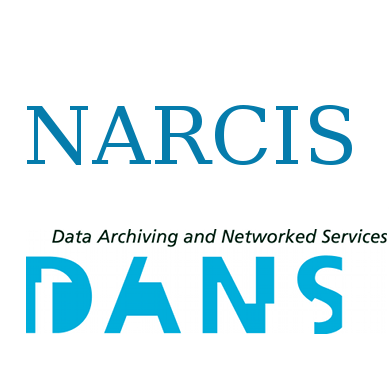Focal point
Location
National Academic Research and Collaborations Information System (NARCIS) is the main Dutch national portal for those looking for information about researchers and their work. NARCIS aggregates data from around 30 institutional repositories. Besides researchers, NARCIS is also used by students, journalists and people working in educational and government institutions as well as the business sector.
NARCIS provides access to scientific information, including (open access) publications from the repositories of all the Dutch universities, KNAW, NWO and a number of research institutes, datasets from some data archives as well as descriptions of research projects, researchers and research institutes.
This means that NARCIS cannot be used as an entry point to access complete overviews of publications of researchers (yet). However, there are more institutions that make all their scientific publications accessible via NARCIS. By doing so, it will become possible to create much more complete publication lists of researchers.
In 2004, the development of NARCIS started as a cooperation project of KNAW Research Information, NWO, VSNU and METIS, as part of the development of services within the DARE programme of SURFfoundation. This project resulted in the NARCIS portal, in which the DAREnet service was incorporated in January 2007. NARCIS has been part of DANS since 2011.
DANS - Data Archiving and Networked Services - is the Netherlands Institute for permanent access to digital research resources. DANS encourages researchers to make their digital research data and related outputs Findable, Accessible, Interoperable and Reusable.
Members:
Resources
Displaying 76 - 80 of 1863Results of the Public Usability Testing of a Web-Based 3D Cadastral Visualization System
The visualization of cadastral parcels in 3D is a challenge, since legal boundaries are, in many cases, invisible in the real world; so how can we properly represent something that is not visible to our eyes? This paper uses the results from research looking into problems of occlusion and ambiguous perception (in terms of position, size and shape) of objects in the context of 3D cadastre visualization. The exploration of specific interaction techniques is essential to overcome these issues.
What would title registration bring to a deeds system with high quality land information?
An important part of a land administration system that is aimed at constantly reflecting the current right holders of the land and supporting the real estate market, is the system behind the registration of rights, restrictions and responsibilities. Over time the way land transactions have been evidenced, moved from oral agreements, via private conveyancing to registration of deeds, and ultimately registration of title (Larsson 1991).
LADM-based Israeli Country Profile: Toward Implementation of 3D Cadastre Registration
Land is a valuable and finite resource, particularly in a small country such as Israel. A variety of drives, such as: urbanization and smart utilization of space, is prompting the stakeholders to promote new land policies. These policies should reflect the societal needs and demands as well as factor in and balance between numerous aspects. Furthermore, in recent years the ecological angle, forest and species preservation have become more and more acute, urging in turn for an even stricter land related actions.
Analysis of the Third FIG 3D Cadastres Questionnaire: Status in 2018 and Expectations for 2022
The 3rd FIG 3D-Cadastres Questionnaire was conducted and distributed by the end of 2018, with an extended deadline of 15th of January 2019. The questionnaire survey is a part of the FIG working group 3D-Cadastres activities for the period of 2018-2022.
Implementation of Spatial Planning Package for Construction of an LADM Country Profile: Reducing Asymmetric Access to Information of RRRs in Indonesia
Spatial plan (or urban plan) as an aggregate product of sectoral policies (i.e., environmental, disaster management, economy, forestry), will be imposed to all land parcels in the form of public law to achieve the vision of a city. This vision relies heavily on the interoperability of land-use, land tenure, land value, and land development. The inseparability between land administration and spatial planning is widely acknowledged by cadaster communities in achieving sustainable development and important for landowners and investors alike.


